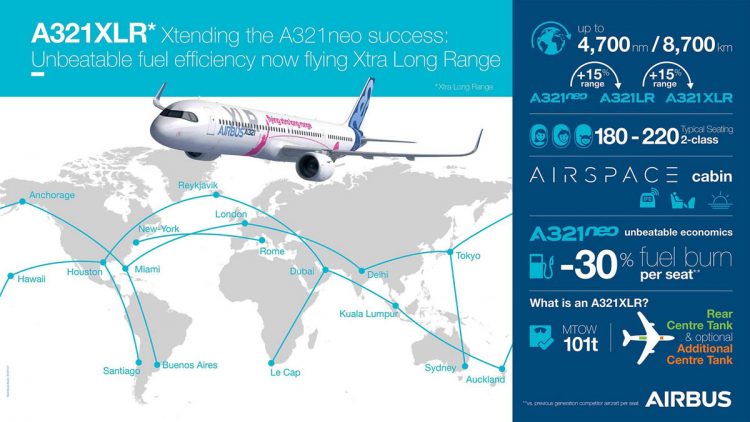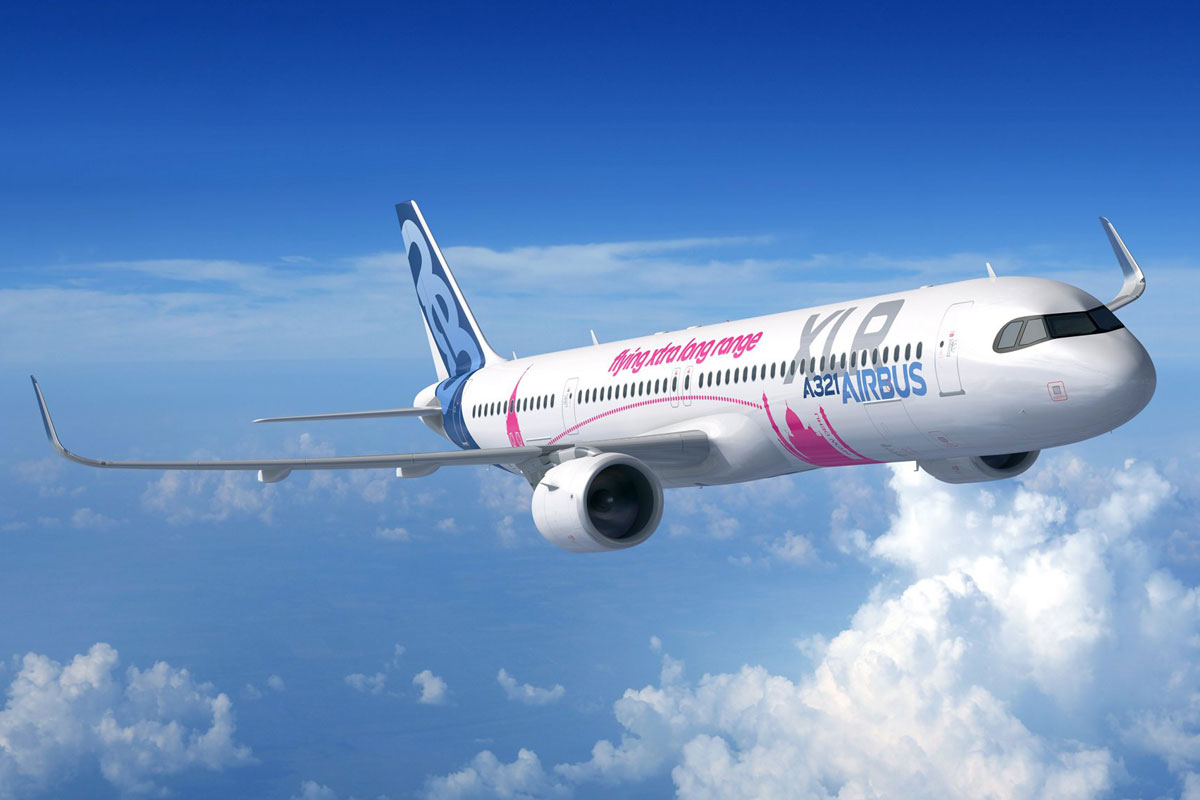Although expected to go into service only in 2023, the A321XLR is astounded by the cumulative numbers in just six months on the market. According to Airbus, the jet has been chosen by 22 airlines and 2 lessors so far, totaling over 450 orders and purchase commitments.
The list is impressive: In the US, United Airlines, JetBlue and American Airlines have chosen the new jet for international and even local flights. In Europe, the A321XLR is ordered from Iberia and Czech, but its customers are scattered around the world such as Australia’s Qantas Airways, Lebanese MEA, Vietnamese Vietjet Air and low-cost airlines like AirAsia X, flynas and Air Arabia. Chilean Sky Airline and JetSmart.
The reason for such success is, however, obvious. Which airline would not be interested in a commercial aircraft capable of carrying up to 240 passengers, something that until recently only widebodies could do, and most fabulously, fly nonstop for up to 8,700 km (4,700 nautical miles) with a cost per seat 30% less than older planes?
“The A321XLR is a classic case of applying incremental innovation to further enhance the Airbus commercial aircraft product line,” explains Gary O’Donnell, head of the A321XLR program.
However, in order to reach the XLR, Airbus had to first create the A321LR, a version that is currently used by companies such as TAP and which allows transoceanic flights to destinations such as New York or Northeast Brazil. The solution in this case was to exchange two extra rear tanks for a larger central tank, which in the A321XLR will gain the company another front compartment.
Interestingly, the modifications needed to create the A321XLR sound simple: Airbus says it will reinforce the landing gear to support the larger 101-ton takeoff weight, make modifications to the internal flaps to improve control at low speeds and other minor modifications to handle larger volumes of water and waste disposal.

The first prototype of the A321XLR, however, will not be ready until 2021 and will launch a certification campaign focused on putting it into service two years later. The autonomy gain of 15% compared to the A321LR seems small, but when we remember that it had already extended the range by 15% over the A321neo it is possible to understand the impact of its performance.
According to the Airbus infographic, the new jet is capable of operating on routes such as Tokyo-Sydney, London-Miami, New York-Rome and Santiago de Chile-Houston, for example.
Without direct competitors, the A321XLR should continue to accumulate orders even with its start of operation still far away.

